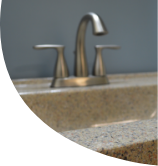Hidden Dangers in Your Bathroom: Is There Lead Leaching From Your Bathtubs?
While some hazards in a home may be more obvious, one of the most serious — and often undetected dangers —comes in the form of lead. Lead is a naturally occurring chemical element, and it’s one of the heaviest and most malleable metals available on Earth. Because of its ease of use, malleability and other physical properties, people once used lead extensively in appliances, fixtures and in manufacturing numerous consumer products.
Unfortunately, the metal can cause severe, long-term health problems and acts as a poison when introduced into the human body. However, these dangers and effects were not always well known. Today, many people are still being exposed to lead in homes that pre-date 1978. Antiques, wall paint and old fixtures can also be spreading toxic levels of lead to your family today. Everything from lead-based paints to lead piping can slowly raise levels of lead in your blood, making it a silent and hidden danger you could be exposed to over a long period of time.
History of Lead Use
Lead’s main use in plumbing dates back as far as Roman antiquity, when it was used to create early plumbing systems for the empire. It was so common, the name for lead still stands today when we look at the periodic table. Lead’s symbol on the periodic table is “Pb,” derived from the Latin word “Plumbum.”
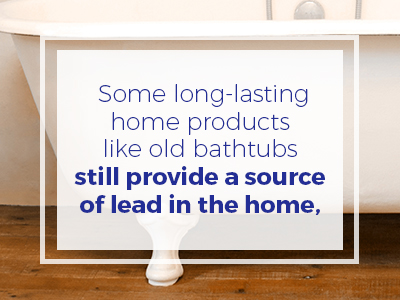
As knowledge of its dangerous effects on the body grew, its use in household products and in paints was eventually replaced by safer alternatives. However, some of the long-lasting home products like old bathtubs still provide a source of a lead in the home, and they are often overlooked by modern home owners. Porcelain, in particular, is often the source of the hazardous metal because lead-based paints and finishes were often the most effective means of surfacing a product due to the metal’s unique properties. As these materials age, the heavy metals are slowly released and come into contact with the homeowners.
For decades up until the 1980s when awareness of its harmful effects increased, it was an increasingly common practice to add lead for fluxing and pigmenting agents to different types of porcelain enamel glazes. It is imperative to test and inspect old cookware, ceramics and porcelain fixtures in your home that were manufactured before the 1980s.
Bathtubs and sinks are some of the most common sources of lead in the home and are often overlooked because they are not involved in food preparation. The heavy metals begin to leach out of them as they age, and the metals slowly work their way into the body through ingestion, either through food, water or air.
In this quick guide, we will look at the threat of lead-based glazes in your bathroom, how to identify dangers, what tests you can perform and how to address and eliminate the dangers of lead leaching in your home.
Identifying the Symptoms of Lead Poisoning
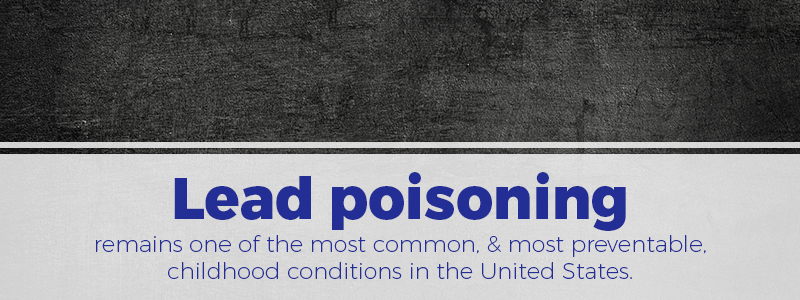
Long-term exposure to lead can generate a lengthy list of health problems, but it is not something that is always immediately identifiable in lower levels. Unfortunately, children tend to be at a much higher risk than adults when it comes to lead exposure and poisoning. According to the Centers for Disease Control and Prevention, lead poisoning remains one of the most common, and most preventable, childhood conditions in the United States.
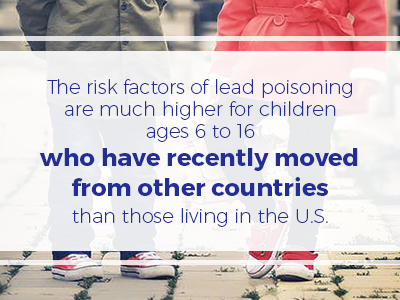
Exposure to lead is usually asymptomatic, which is why it often goes undiagnosed and untreated. Increased levels of lead, especially in children, can cause severe neurological problems including coma, convulsions and even death. Studies have also shown that lead can cause other problems with the nervous systems and kidneys. In addition, lead exposure has been associated with decreases in intelligence and the impairment of neurobehavioral development. For children, muscle and bone growth, along with learning disabilities, speech problems and other mental and physical symptoms may be present.
Lead is a poison that can impact every aspect of the human body. The first step in prevention is to get blood tests for you and your children. Unfortunately, the symptoms of lead poisoning may not always be evident. If you suspect, or are worried about lead in your home, blood tests are the best way to identify elevated levels.
People who are living in older homes and have older ceramic and porcelain fixtures such as bathtubs, sinks and old water piping, or those who have emigrated from other countries with lead poisoning problems, should consider having a medical professional analyze their blood. The risk factors of lead poisoning are much higher for children ages six to 16 who have recently moved from other countries than those living in the United States.
Blood Testing and Treatment for Lead Exposure
For children ages one and two, it is recommended that they be screened for lead. Any time renovations or repairs are being conducted in older homes, the disturbances caused by these processes could stir up older lead-based paints and dusts that may be more toxic to young children.
Traditionally blood lead levels of 10 micrograms per deciliter were often considered too high, but the CDC now classifies five micrograms per deciliter blood level to be a serious danger for children. Depending on the level of lead, treatment options may vary.
For children with blood lead levels exceeding 45 micrograms per deciliter, chelation therapy may be used. In addition, your primary care provider may need to consult with an expert in the chemotherapy treatments for lead exposure, and the use of chelation agents.
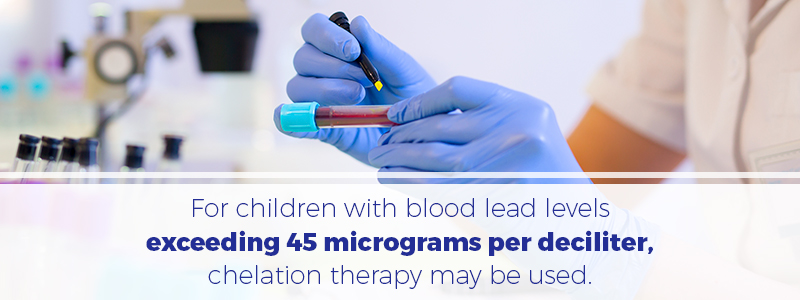
After receiving a blood test from a qualified doctor, other treatment options may be available depending on the severity of your lead poisoning. The doctor, however, cannot identify the source of contact in your home. If you suspect lead exposure, once you have confirmation of elevated levels in your blood, you can begin to assess the home and eliminate its source.
Identifying the Source of the Lead
There are a number of household products and fixtures that can be increasing the levels of lead in your blood. If exposure has occurred, it can be a frightening experience to identify the source. Where the lead is coming from is not always obvious if no home repairs or renovations have been conducted. In addition to lead-based paints, which are the most common sources of exposure, there are a number of hidden sources you should consider.
For example, nearly 75 percent of the bathtubs in Vermont homes built before 1978 were estimated to have used lead in the enamel glazes. Porcelain bathtubs aren’t the only culprit, though. Cast iron and steel tubs as well as bathroom and kitchen sinks could be leaching lead. Another 40 percent of the tubs with lead were also estimated to have lead dust. Lead dust can be a serious problem because lead poisoning can result simply by touching the glaze or end up in the very water your bathing in. Showers in place of baths are recommended to help mitigate the risk of exposure.
Antique dishware and ceramics may also contain lead. This could include your favorite coffee mug or serving bowls, which puts lead directly in your food. Older products aren’t always the problem. In some cases, foreign products imported from countries like China may also contain lead in their ceramics and porcelain consumer products. Plastics may also contain lead depending on how they were manufactured.
In some cases, lead may be used in your home’s plumbing, which can mean the source is coming from the water. It is imperative to use cold water when cooking and preparing food. You should always allow the water to run between 30 to 60 seconds before use as well to help clear out the built up lead.

Ceramic tile may also be a leading source of lead in your home. Tiles may also use the similar glaze techniques as with bathtubs and sinks. In some cases, countertops may have this same issue, too. Surfaces that are in poor condition are more hazardous because they increase the risk for lead dust in the home.
Those are some of the most common sources of lead found in homes. You can begin your hunt for the source by using home-based testing kits. There are a number of different types of lead testing kits you can use in your home. While home-based do it yourself kits are effective at identifying potential lead sources, hiring a professional is also recommended if you do find increased levels of lead.
A professional will be equipped in the proper testing and identification of the source, and they can recommend what actions will be needed to address and eliminate the problem. Professional technicians can also order lab tests and provide more detailed results than a home-based kit.
Lead Testing Methods
As mentioned, there are a number of options to test for lead effectively. Professionals often use the refined X-ray fluorescence method, which is a great way to test for lead in bathtubs, sinks and other fixtures that may have lead-based enamel glazes. This is the recommended method, but it will require the services of a qualified technician.
Other methods include dust wipe testing, which is used primarily to identify for open sources of lead. If a lead-based enamel glaze on a bathtub or sink is not in poor condition, the results of this testing method may not show up as it depends on readily available lead particles. It is best to have someone who is trained and knowledgeable to perform this type of test because of the many variables that can provide negative results.
There are also a number of different chemical swabs that can be utilized for testing. This is a very effective method for testing for lead paints around the home. As with dust wipe methods, this is not always effective for testing glazes on tubs and sinks because the condition of the materials will determine if a viable sample can be gathered.
Chemical testing is not always accurate, either, which is why you should use both home-based kits, then consult a professional to test. Home-based kits are good for finding potential problems, but professionals can further the search and provide you with the essential information needed to eliminate the problem.
How to Address and Eliminate the Source
Now that you’ve identified the danger, you have to figure out the best and safest way to eliminate it. In some cases, it may not be an overnight fix, which is why you should take immediate precautions to eliminate exposure until you can properly eradicate the source.
In the cases of a lead-leaching bathtub, one of the first steps you can do to reduce your risk of more lead exposure is to switch to showers. This is an effective method for people who are not the homeowners or who cannot afford the needed repairs or replacement steps. In some cases, renters may be unable to address any of the problems in their property without the help of a landlord.
For lead-leaching bathtubs or sinks, hiring a professional to resurface the fixture may be an effective option. Resurfacing the tub can trap the toxic lead beneath a surface, preventing further contact with the lead glaze. Depending on the condition of the tub, replacing it might be more welcome for homeowners.
Sometimes, though, as with many antique claw foot tubs, owners are often attached to the classic aesthetic of their bathtub. Having the tub resurfaced may be the better option in that case. Resurfacing is also likely the cheaper and more cost effective option than a full tub replacement. Installation of a new bathtub can run in the thousands of dollars. Resurfacing, however, can be more along the lines of a few hundred dollars in many cases.
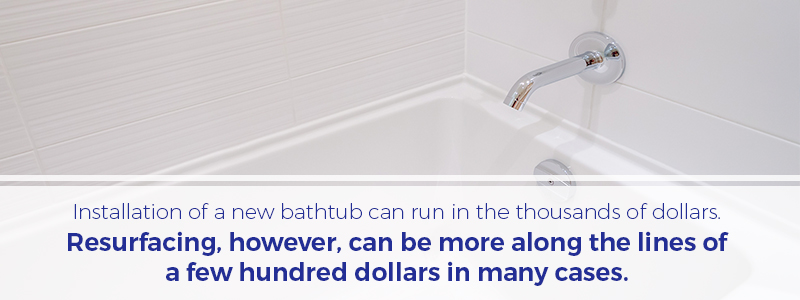
If you choose to resurface the bathtub or sink, you should be aware that there are many risks to this process as well. Hiring a professional is a much safer alternative than attempting to perform this task yourself. Resurfacing a lead-based tub not only increases your chance of coming into contact with the lead, but also the many dangerous chemicals and products used to do the job correctly.
If you have identified lead in your plumbing systems, it might be beneficial to replace older pipes, but in some cases, this may costly. Allowing the water to run for 30 to 60 seconds, and always using cold water during food preparation can help mitigate the problem. For drinking water, buying a filter that can eliminate the lead is highly recommended. If you suspect any of your cookware, bowls, glassware or ceramics contain lead or lead glazes, do not use them to store or serve food. As mentioned newer household products may still contain lead if they were imported from foreign countries that do not follow the United State’s manufacturing standards.
In the case of countertops and tiles, replacing these can be an effective but costly method for reducing lead exposure in the home. Resurfacing may also be in option. Resurfacing lead-based glazes traps all of the danger below the surface of the new finish.
How to Dispose of Lead Products Safely
For some homeowners, they may want to dispose of the lead-glazed fixtures in their home rather than opting for resurfacing. Disposing of porcelain or cast iron sinks and tubs that have lead-based enamel glazes might be a very challenging process.
Bathtubs and cast iron sinks are extremely heavy, large objects. In addition, the lead may pose an additional health and environmental risk if not disposed of properly. Thousands of tons of remodeling waste ends up in landfills every year. It is important to consider if you want to contribute to additional waste or if you would prefer to donate your tub to someone who would be willing to refinish it themselves.
Selling a bathtub or sink may also be an option, but you must indicate to the buyer that the product poses a health risk and will need to be resurfaced. Some people who are looking for antique fixtures may be more than willing to pay for the right product and foot the additional resurfacing costs to make it their own.
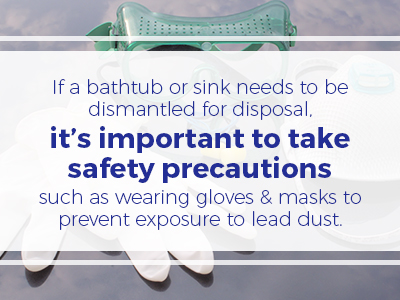
As mentioned, replacing a tub is significantly more expensive than resurfacing. If you cannot donate or sell your old bathtub or sink, there are many other disposal options available. As with any disposal, there are companies that specialize in removing hazardous materials and large items like bathtubs and sinks. If a bathtub or sink needs to be dismantled for disposal, it is important to take safety precautions such as wearing gloves and masks to prevent exposure to lead dust.
The same options are also part of lead paint removal and clean up if you have been doing any remodeling of your home. There are many state and local regulations to prevent hazardous materials from ending up where they shouldn’t. Proper safety equipment such as masks and clothing can help minimize your risk during cleaning and paint removal. In some cases, calling a professional waste disposal company may be the only option for unloading your lead-based products.
It is important to place any rags, or cleaning items that have been used during the process of cleaning lead-based paints into heavy-duty trash bags, which are sealed. You should also not use household vacuum cleaners or items for cleaning that could further spread the toxic lead dust around the home. Effective washing methods and cleaning products are available to handle lead hazards.
When in doubt, consulting with an expert for both the disposal and proper clean up may be the best option. Minimizing your risk comes from knowing where the dangers are, and how to address them in your home. For other products such as dishware and coffee mugs, simply throwing them in the trash might be the most effective and easiest option.
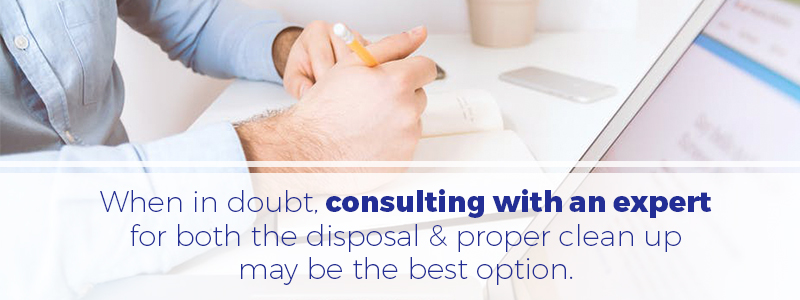
While cookware and glassware that has lead might not be useful for serving or storing food products. You could always use them around the home to store other objects without risking ingesting harmful lead.
Improper disposal of lead-based products can lead to soil contamination and other environmental dangers that could impact you and your family. The U.S. Environmental Protection Agency allows contractors to dispose of residential lead waste on variety of products. In some states and municipalities, lead-based waste might also be disposed of in the regular trash pickup. Checking with your county environmental health officials, municipality and the state regulations will help you decide what the best alternative is.
If soil is contaminated, property owners might be responsible for handling that as well. In some cases, there are approved disposal facilities for contaminated soil. Other times, it is important to bury the contaminated soil to prevent children and animals from coming into contact with it. Soil can also be disposed of in landfills.
Reduce Your Risk of Lead Exposure in Your Home
Lead is a dangerous metal, acting slowly, and often hiding in open view. Since the symptoms of lead poisoning generally go undetected, it is important to understand the many risks it poses. If you live in a home that was constructed before 1978 and are utilizing older, antique fixtures in your home, you may want to consider getting a blood test for yourself and your family members. This is especially important for women who are pregnant, or if there are young children in the home. Children are far more susceptible to the harmful effects of lead than adults, and are often exposed to higher amounts.
Testing your fixtures such as bathtubs, sinks, tile floors, plumbing and even the dishware you use to serve food can help you prevent exposure and ensure the safety for you and your loved ones.
For more information about resurfacing your bathtub or other remodeling projects, contact us today.


